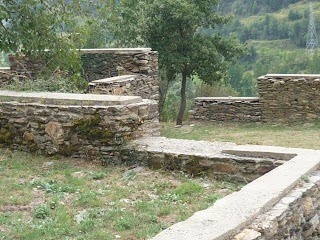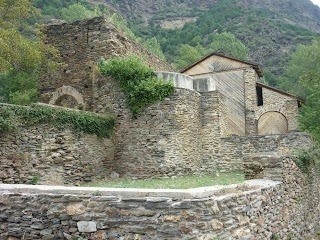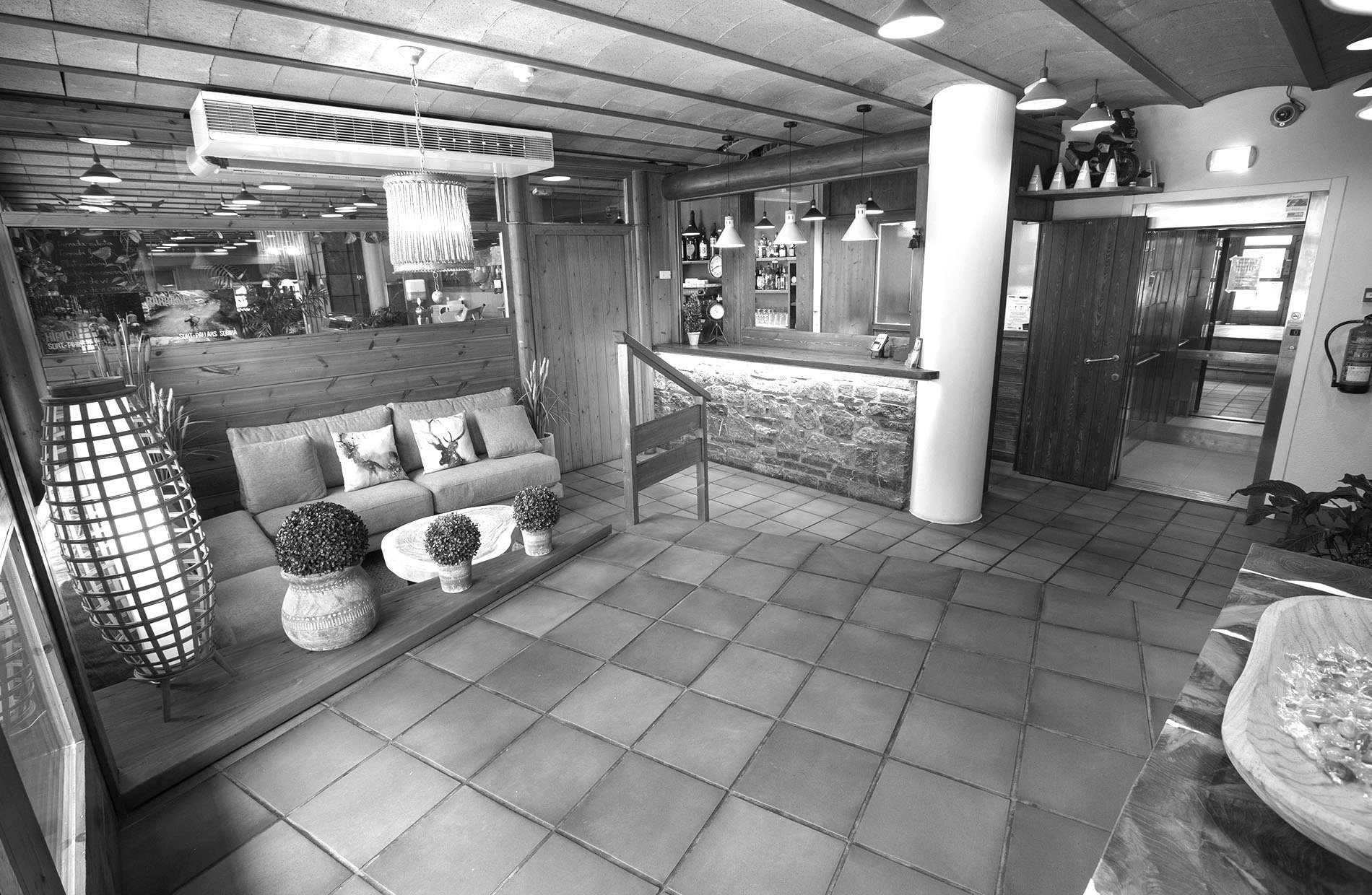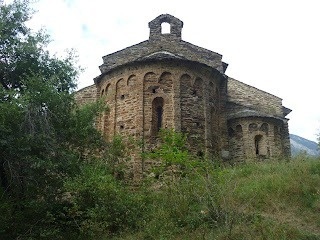We were Rosa Planell Grau and Miquel Pujol Muro following one of our favorite hobbies: discovering unknown places for us, looking for information to know their history, trying to understand what they represented in ancient times and also taking a few photographs. If on top of that we can walk for a while doing some exercise better. One of these occasions offered us references to the Burgal Benedictine monastery.
We park the vehicle in the square at the entrance to Escaló, cross the road and take a track that leads us past the bridge. We turn right and follow the path that later becomes a simple path and in about half an hour takes us to the monastery that surprises us with its magnitude and its decline. On the side, before reaching the monastery, there is a path that takes us to some caves of meager proportions, which according to the sign were hermitages and are located near the Noguera Pallaresa river.
San Pedro de Burgal, over the years, has not had a peaceful existence. Monastery, abbey and priory have been its category according to the number of monks who inhabited it. First masculine, then feminine.
As for the toponym , the thesis is defended that it is the contraction of the terms burgo and alto , which would clearly refer to a construction with defensive elements , still visible today despite the magnitude of the looting that the place has suffered .

Its exact foundation is difficult to know, the first documented texts found that mention it are from the year 859 when Rampon of Toulouse granted Abbot Deligat a privilege of immunity. The monastery fell into disrepair in a short time and was ceded to Gerri de la Sal before 908 and then to Santa María de la Grasa before 948 , from this year until 960 it was a female monastery . Their properties extended through the valleys of Àneu, Cardós and Ferrera, and along the banks of Sort. This double assignment was the cause of lengthy litigation. There were numerous disputes and falsified documentation that lasted until the year 1337, when the assets were divided between the two communities. Finally in 1570 it was secularized and religious activity within its walls disappeared. It subsisted with a church until the confiscation of the 19th century.

The state of the monastery is currently almost in total ruin. Of the outbuildings, the only thing that remains is the church. It is a building with a basilica floor plan made up of three naves that were initially covered with a wooden roof. The north façade maintains its original height as well as the dividing arches between the main nave and the lateral nave, formed by a row of arches supported on rectangular pilasters without ornamentation. At the top of the middle wall you can see the holes where the wooden roof structure was supported.
The church stands out for a double chancel. As a curiosity, the west one is built on two levels, the lower one contained an altar and the upper one a wooden heart. This distribution can only be related in the Romanesque with the abbey church of Santa María de Arlés de Tec in France and San Cipriano de Mazote or Santiago de Peñalba in Castilian.
The other header has three apses that correspond to each of the naves. Decorated with Lombard arches in the frieze of the semicircular walls and bands it has simple windows.
Within the remains of the church in the central apse is a small chapel dedicated to Saint Peter. The monastery was declared a national monument in 1951 but until recently it has not been restored to its current state.
We have not seen the mural paintings since access to the apse is closed by wooden doors that cover the entire façade but according to information the originals are in the MNAC, since 1932 when they were bought by the Barcelona Museum Board . Some reproductions are on display in the church. There is also a marble oil basin preserved at the MNAC that shows a figurative type of decoration.
The mural paintings are dated between 1080 and 1090 and are attributed to the Master of Pedret. They represent the Pantocrator between the archangels Michael and Gabriel and adored by two saints. Between the windows there is the Virgin carrying a chalice , to her right Saint Peter and to the left Saint John the Baptist and Saint Paul . In the lower part there is a painting of a lady who corresponded to the Countess Lucía de la Marca , benefactress of the monastery , married to Artal I de Pallars Sobirà in 1085 , hence the dating of the paintings .
It was a pleasant day despite the state of the monastery. As always to find the nice detail , we have to tell you that we ate some fabulous blackberries , which were offered to us from some brambles along the way .
The acid reflection will be given to us by a hiker, who tells us that most of the Romanesque art thieves were from Barcelona, and precisely to avoid their actions, they have taken all valuables to that city. The result for the neighbors is the same, those of Barcelona have 'taken' their religious belongings. Religious property belongs to the people, not to the church-company, nor to the state-protector, this explains the reluctance of the good people of these lands to allow the plundering – now in the name of security – to continue until the last part .
POSTED BY ANTONIOMORA.VERGES @ BLOGGER.COM
Source: http://ow.ly/qxg9y







